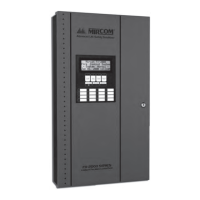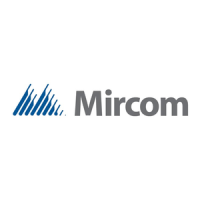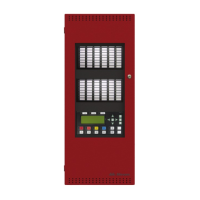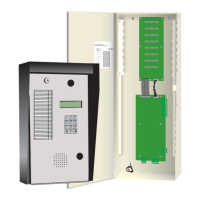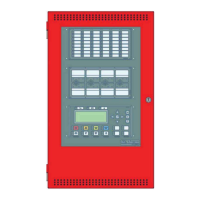PRO-2000 Installation and Operation Manual
39
X6 and X0 series
The LCD performs only display functions.
X2 Series
• The LCD performs processing and display functions.
• The LCD Backplane is used to provide connectivity between the LCD and the interface cards. Up to 2
expansion cards can be connected to the LCD Backplane.
• The LCD has built-in Master Alarm and Fault Relay-2 Form-C contacts for each relay. The Master Alarm
Relay is activated whenever an alarm is present on the system. The Master Fault Relay activates whenever a
fault is present on the system.
• The LCD monitors the power supply for AC/DC fault detection.
• Various status LEDs provide a visual indication of the card's health. There are Red LEDs for error codes,
blinking LEDs (Running) indicating the board is working, Green Power LEDs, and Communication LEDs.
• Reset push button to hard reset the LCD card.
• Dipswitch providing software options. Factory set only.
• Rotary switch allowing the selection of different configuration modes. Factory set only.
• Three jumpers, two for the watchdog and one for lithium battery. These jumpers must be connected at all
times. A watchdog circuit, monitoring the microprocessor, halts system operation if a hardware or software
failure occurs. The lithium battery provides the backup for the real-time clock and the RAM memory used for
event logging. The real-time clock provides time and date for event recording.
When a system is first delivered the LCD card has its internal battery jumper, JP6, disabled. Prior to installation
move the jumper shunt into position over both pins. If the jumper is missing the panel will annunciate a "Clock
Battery Fault" at power up. If the jumper is in, you can remove power and the event log and the clock remain
powered.
Up to two (2) expansion cards can be added via the LCD backplane. For panel models X0E, X0M, X2E, X2M,
X6E, and X6M, the LCD Connector J2 connects the LCD to the MIMIC Driver card or the LCD Expander card for
additional display/control capabilities.
The LCD has two sockets for adding communication modules. Depending on your configuration, these could be
either RS-232 or RS-422 communication modules.
For LCDs used as processing and display units, installing an RS-232 module activates the phone jack allowing
LCD software configuration through an external PC, or interfacing to a Printer (depending on position of SW1, see
Table 9). Installing an RS-422 module activates data links to other panels.
The RS-232 module is not used when LCDs are display units. Installing an RS-422 module activates data links to
the MPU or to a Repeater network.
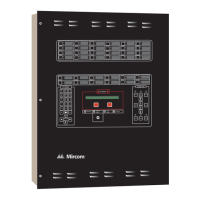
